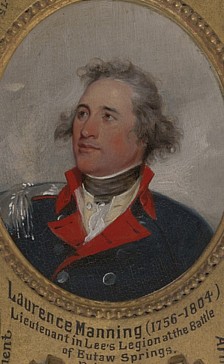
Previous William Thomas Sherman Info Page postings, quotes, observations, etc.
*----*
["Heart - Crazy On You (live 1976)"] and ["Heart - Alone (Alive in Seattle 2003)"]
While for the young at heart...
["KISS - Deuce - The Midnight Special (Live 1975)"]
Once more in spirit with the season (Summer's pretty close), one from Ethelbert Nevin (1862-1901), and a second by Wilhelm Peterson-Berger (1867-1942):
*-----*
["Ethelbert Nevin: Water Scenes Op. 13 No. 4 - Narcissus" -- Phillip Sear, piano] and ["Wilhelm Peterson-Berger: Song of Summer / Olof Höjer piano"]
If you mayhap can read music on at least a rough or rudimentary level, I came across an unusual YouTube channel at http://www.youtube.com/user/Hexameron that is most interesting for two reasons: 1) because it contains an extensive library of what are (for many) some scarce and not often heard piano works dating from about post-Beethoven to more recent times, and 2) because you can follow along with most all of them by reading the sheet music that accompanies each piece. The effect of the latter is not unlike watching a painting being done while it is being painted; and it is edifying and informative, at least if you are person who enjoys learning, watching sound become symbols and the symbols becoming sound.
To give you one small sample, here is the "Praeludium" from the "Second Modern Suite" by American classical composer Edward MacDowell (1860-1908). But, as I say, this is only a sample, and if you go to the link I give above, there's much and many more like it and similar there.

I posted the following "trivia" at "Lee's Legion, 2nd Partizan Corps" group page on Face Book, and thought some might find it of curiosity here. If by chance you are already on Face Book and have a more than casual interest in the subject,* please consider joining our nascent group at http://www.facebook.com/profile.php?ref=profile&id=1588861163#!/group.php?gid=121637007849696 or if that link doesn't work (which it very possibly may not), do a search under "Groups" for "Lee's Legion, 2nd Partizan Corps." At present, not a great deal of activity is planned or anticipated, but it at least serves as both a tribute and a resource and contact point for scholars and buffs.
----------------------------
DID YOU KNOW?...
--(Note. "LMS" refers to the 1869 edition of Lee's Memoirs.)
* Although Pulaski's (est. March 28, 1778) and Armand's (est. June 25, 1778) antedated Cathecart's or the British Legion (est. July 1778), all seemed to have been inspired and or took their cue from the Queen's Rangers first formed in August 1776 on Staten Island by Robert Rogers; and where horse units were combined with "rangers." Lauzun's Legion, for its part, made its appearance on March 5, 1780.
* Lee's Partisan Light Dragoons came into being April 7 1778. Then on July 13, 1779, Capt. Allen McLane's elite Delaware company was joined to it to form (at least on paper and in intention though never formally realized) a "legion." The unit was finally designated the 2nd Partisan Corps on Jan. 1, 1781; so that the origin then of the Legion cavalry was the 1st Continental Light Dragoons, while the Legion infantry was founded on McLane's company.
* Most of the Legion, circa 1780-82, were Virginians, and after that men from Maryland. But in addition to this, the unit had soldiers from Delaware, Pennsylvania, Connecticut, South Carolina, North Carolina, Massachusetts, and New Jersey.
* The Legion's farriers marked the shoes of the cavalry horses; so that the troopers, if need arise, might better track each other. See LMS p. 401.
* Was the Legion ever taken completely by surprise? Almost! While advancing on their way into S.C. in early April 1781 (following Guilford and the sojourn at Ramsey's Mill), the Legion one very dark night believed itself under imminent attack by Cornwallis' forces; only to learn next morning that what had set off the muskets of the pickets in the bleary hours was actually a pack of wolves scavenging the pine barrens. See LMS pp. 326-330.
* What was often or occasionally on the menu for the Legion while in the south? Bacon, beef, corn mush, rice, sweet potatoes, and later alligators and frogs! The horses for their part loved "Indian peas" (by which I believe he means peanuts.) LMS p. 523.
* Was Napoleon's "Bravest of the Brave," Marshal Michel Ney, in reality Michael Rudolph (1758–1795) of the Legion infantry? Well, there is one "legend" that asserts as much. See The Southern Literary Messenger, Jan. 1847, Vol. XIII, no. 1, p. 17; found at http://books.google.com/books?id=kVIFAAAAQAAJ&printsec=titlepage#v=onepage&q&f=false
----------------------------
* Though of course if, as it happens, you prefer Arnold's American Legion (Virginia 1781, Fort Griswold), I suggest you consult the lower party. It's a free country -- to each his own.